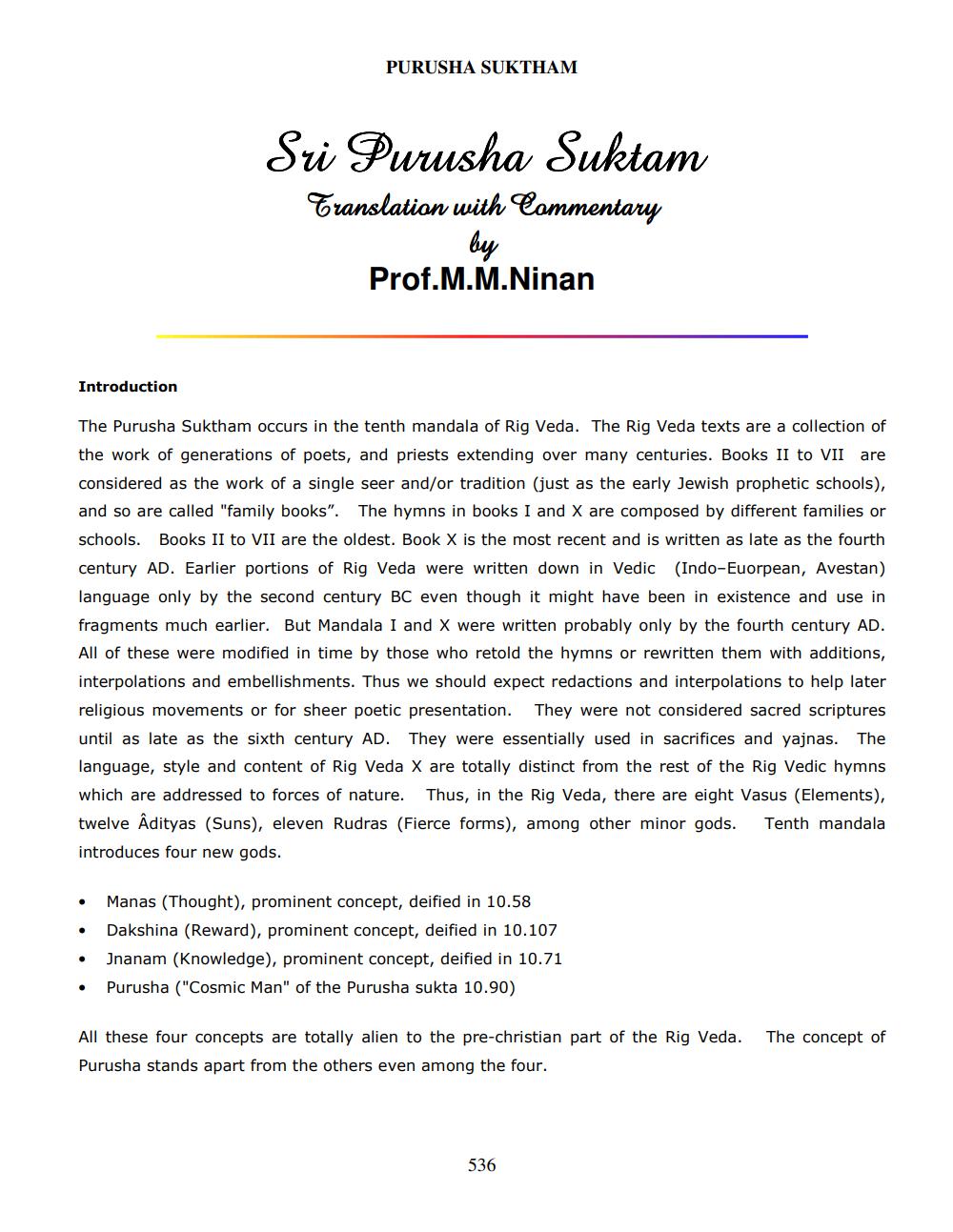________________
Introduction
PURUSHA SUKTHAM
Sri Purusha Suktam Translation with Commentary
by Prof.M.M.Ninan
The Purusha Suktham occurs in the tenth mandala of Rig Veda. The Rig Veda texts are a collection of the work of generations of poets, and priests extending over many centuries. Books II to VII are considered as the work of a single seer and/or tradition (just as the early Jewish prophetic schools), and so are called "family books". The hymns in books I and X are composed by different families or schools. Books II to VII are the oldest. Book X is the most recent and is written as late as the fourth century AD. Earlier portions of Rig Veda were written down in Vedic (Indo-Euorpean, Avestan) language only by the second century BC even though it might have been in existence and use in fragments much earlier. But Mandala I and X were written probably only by the fourth century AD. All of these were modified in time by those who retold the hymns or rewritten them with additions, interpolations and embellishments. Thus we should expect redactions and interpolations to help later religious movements or for sheer poetic presentation. They were not considered sacred scriptures until as late as the sixth century AD. They were essentially used in sacrifices and yajnas. The language, style and content of Rig Veda X are totally distinct from the rest of the Rig Vedic hymns which are addressed to forces of nature. Thus, in the Rig Veda, there are eight Vasus (Elements), twelve Âdityas (Suns), eleven Rudras (Fierce forms), among other minor gods. introduces four new gods.
Tenth mandala
· Manas (Thought), prominent concept, deified in 10.58 Dakshina (Reward), prominent concept, deified in 10.107 Jnanam (Knowledge), prominent concept, deified in 10.71 Purusha ("Cosmic Man" of the Purusha sukta 10.90)
All these four concepts are totally alien to the pre-christian part of the Rig Veda. Purusha stands apart from the others even among the four.
536
The concept of




